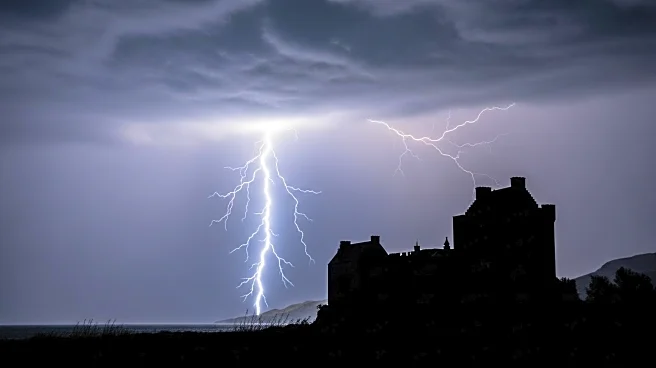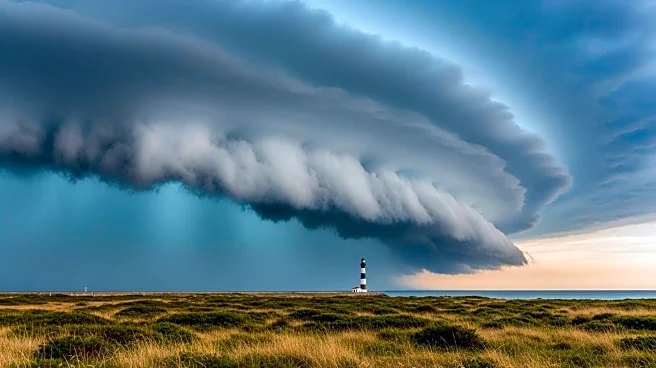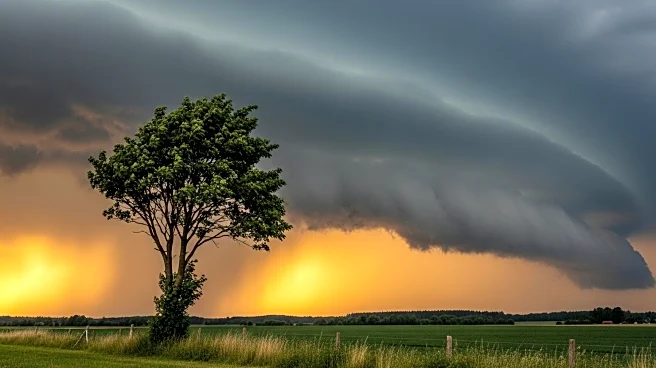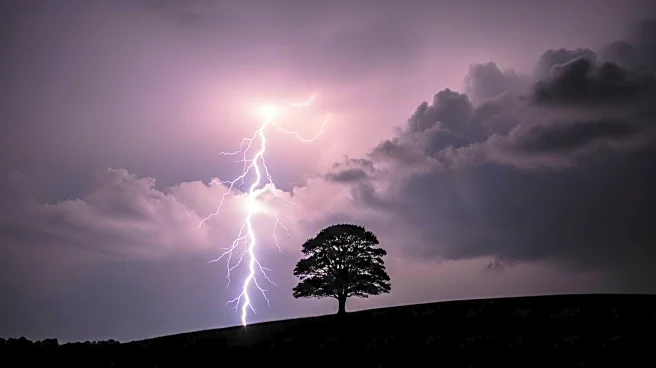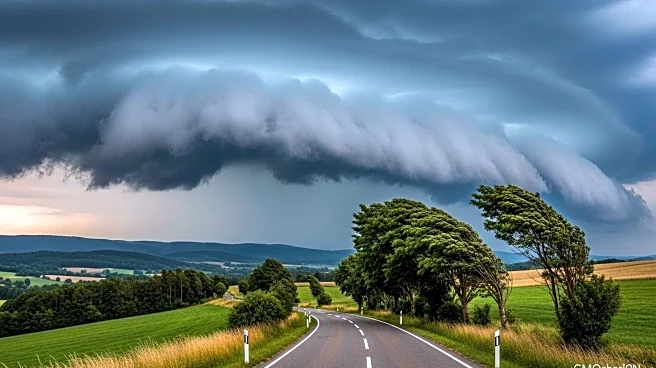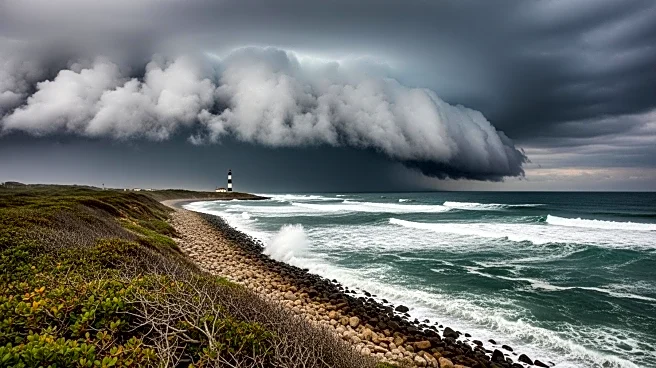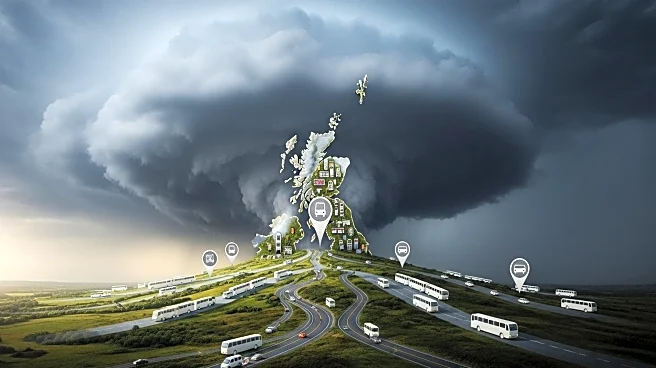What is the story about?
What's Happening?
Storm Amy has swept across Scotland, causing significant damage and leaving over 60,000 homes without power. The storm, which brought high winds and heavy rain, hit harder and faster than anticipated, according to Network Rail Scotland. The storm resulted in fallen trees, flooding, and debris blocking railway lines, leading to the closure of several routes. Scottish and Southern Electricity Networks (SSEN) is working to restore power to affected properties, but ongoing high winds are complicating efforts. An amber weather warning remains in place for northern Scotland, with a yellow warning extending to northern England and parts of Wales. Gusts of up to 96 mph were recorded, and further disruptions are expected as the storm continues.
Why It's Important?
The impact of Storm Amy highlights the vulnerability of infrastructure to extreme weather events. The widespread power outages and transport disruptions underscore the need for robust emergency response systems and infrastructure resilience. The storm's unexpected severity has strained resources and affected daily life, with train services canceled and road closures causing significant inconvenience. The economic impact is also notable, as businesses face interruptions and potential losses due to the storm. The situation calls for increased investment in weather forecasting and infrastructure to better prepare for future events.
What's Next?
Efforts to restore power and clear transport routes are ongoing, with SSEN and Network Rail Scotland working to address the damage. The amber weather warning remains in effect, and further disruptions are anticipated as high winds continue. Authorities are urging residents to stay informed and take precautions as the storm progresses. The focus will be on assessing the damage and implementing measures to prevent similar disruptions in the future.
Beyond the Headlines
The storm raises questions about climate change and its role in increasing the frequency and intensity of extreme weather events. It also highlights the importance of community resilience and the need for coordinated emergency response strategies. The event may prompt discussions on infrastructure investment and climate adaptation policies to mitigate future risks.
AI Generated Content
Do you find this article useful?
